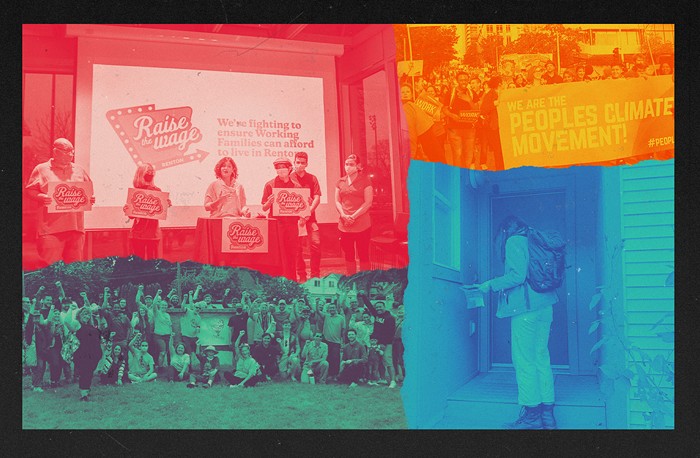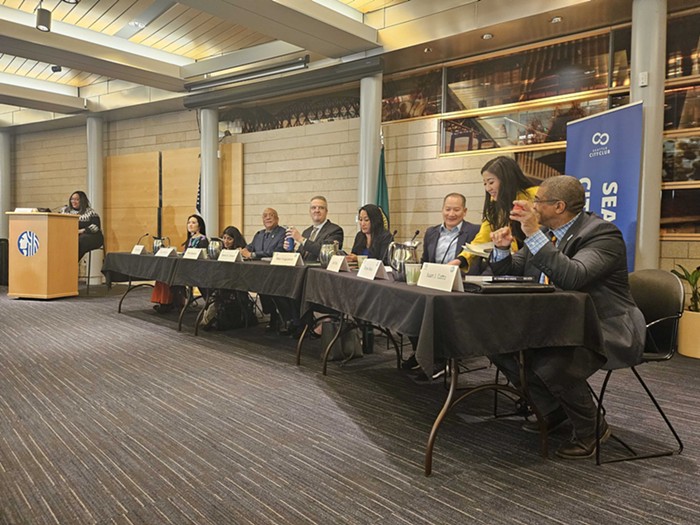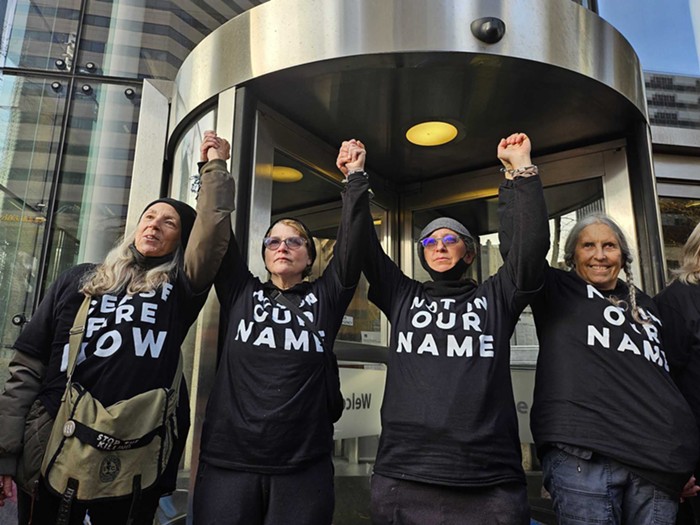
Washington State's Department of Ecology is doing something that's never been done before. In the absence of state legislators passing sane climate policies, Ecology is pursuing a rule to cap greenhouse gas emissions.
Recent history draws a pretty good map for how we got here. In December, Governor Jay Inslee laid out a whole plan to pass cap-and-trade legislation. The plan would have capped emissions and taxed the state's top 130 polluters on their carbon emissions, funneling the estimated $1 billion in revenue into education, transportation, and other projects.
But that plan didn't work out. The fossil fuel and manufacturing industries protested heavily, Republican state legislators whipped up exaggerated fears of higher gas prices, and the Democrats in the state house, seeing that cap-and-trade wasn't going anywhere in the Republican-controlled senate, passed the idea out of committee but ducked when it came to sending it over to their senate colleagues.
Inslee, however, didn't back away from his cap-and-trade plan quietly. Instead, he issued an executive order directing the Department of Ecology to come up with a rule to cap carbon emissions. Today, Ecology announced that they're considering a rule that would potentially cap emissions on the state's top 35 polluting facilities that contribute 60 percent of the state's greenhouse gas emissions. It's a cap without the trade, and it's unprecedented.
Ecology director Maia Bellon clarified that the rule would impact facilities producing more than 100,000 metric tons of greenhouse gases. The facilities affected would be factories, power plants, natural gas distributors, petroleum fuel distributors, waste facilities (like landfill), and metal manufacturers. (You can check out the full list here.)
The agency stressed that the impacts of such a rule would extend far beyond climate mitigation. Cutting down on greenhouse gases means cutting down on air pollution, which means cutting down on heart and respiratory disease.
But the new cap goal leaves a lot of questions unanswered. What's the deadline? And how much will be capped? If companies are told to cap their emissions, how are they going to do it? Methane capture technology at landfills? More efficient buildings?
"The way we're thinking about compliance is wide open," Stu Clark, Ecology's air quality program manager, said on a press call this morning.
It's unclear how fossil fuel companies could accomplish the cap without a trade—meaning a cap without a market mechanism to help companies stay flexible in swapping carbon credits and offsets under the limit. For example: What about the petroleum fuel producers who are going to be held responsible for the downstream combustion of the fuels they produce for cars? (Under a cap-and-trade system, maybe they'd be able to buy carbon offsets, like helping plant forests that suck up carbon dioxide.)
"My personal hope for another good thing that could happen is if industries look at this and see that regulation without any market mechanism is actually pretty heavy-handed," Kristin Eberhard, senior researcher at the Sightline Institute, said. Maybe those companies would actually end up supporting a cap-and-trade program that allows them more flexibility once the cap gets installed, Eberhart suggested.
Eberhard wondered how the state might enforce a cap without putting a price on carbon. Caps were invented as part of cap-and-trade, after all. Without companies purchasing carbon permits, how do you even track how much they're emitting? "This has never been done before," she said.
Perhaps a cap on emissions could kick the state legislature into passing complementary legislation—though this is, after all, the same legislature that refused to pass cap-and-trade last session. Policies that do complement the cap could also be accomplished through ballot initiatives. Carbon Washington, for example, is one such group that's attempting to put a revenue-neutral carbon tax on the 2016 ballot, though climate justice groups disagree with Carbon WA's revenue-neutral approach. Instead, climate justice groups would like to see a ballot initiative that incorporates the input of communities most affected by climate change, puts racial and social justice at the center of the issue, and potentially directs revenue from a climate policy toward those ends.
But now that the rule-making process is rolling, the public will have lots of opportunities to generate new ideas and input for ballot initiatives next year. And maybe with a fire lit under their butts, big polluters will come up with interesting innovations, too. We're reaching out to the companies on Ecology's list—we'll update if we hear back.


















